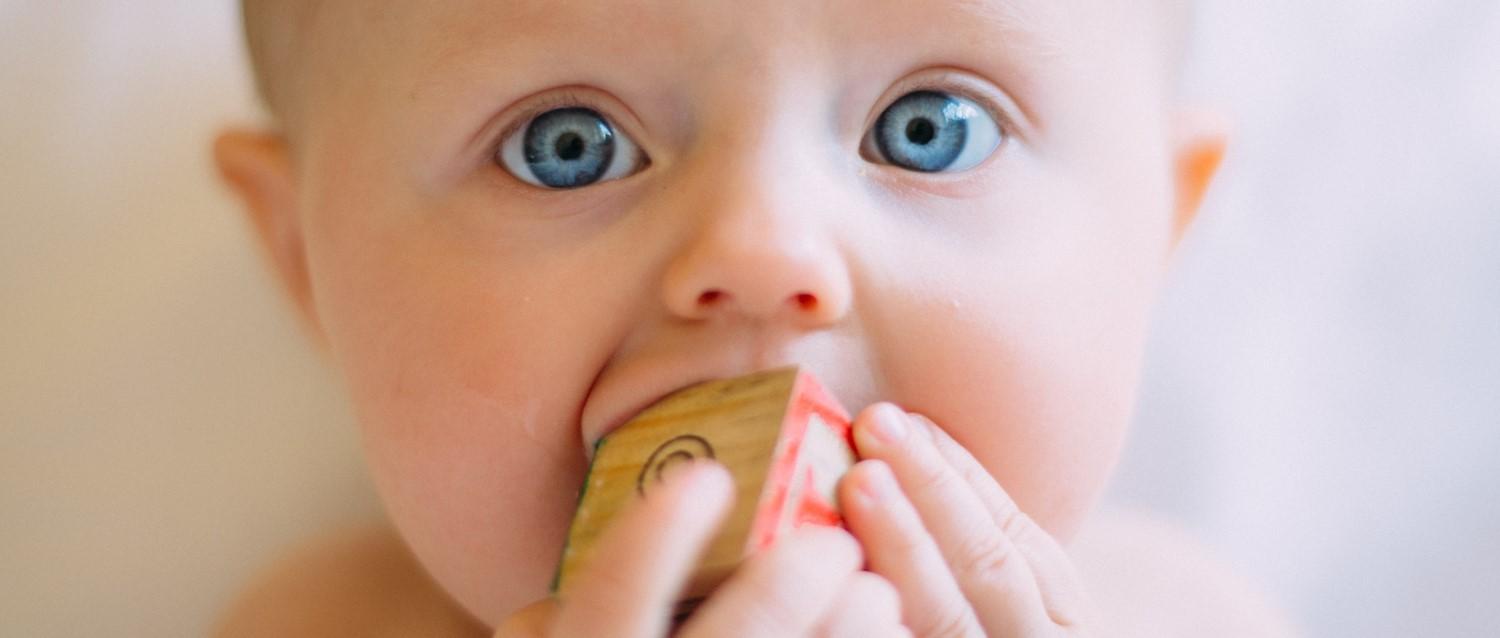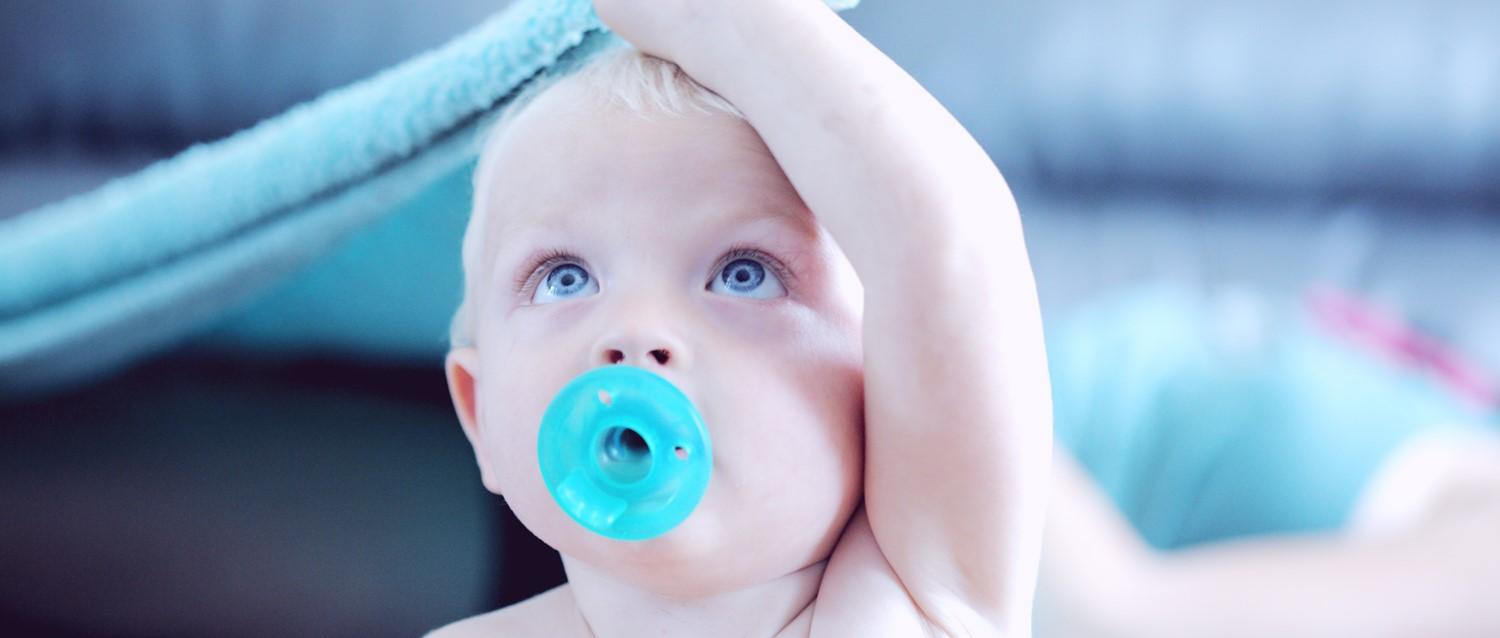
How to relieve your baby's teething pain
Peer reviewed by Dr Sarah Jarvis MBE, FRCGPAuthored by Amberley DavisOriginally published 5 Mar 2022
Meets Patient’s editorial guidelines
- DownloadDownload
- Share
- Language
- Discussion
Teething is a stage that every baby goes through, but mild teething pain and discomfort can unsettle your little one. To help soothe them, there are several teething remedies you can use at home. If these don't work, some medicines can help, although it's important to be aware of potentially harmful ingredients available on the market.
In this article:
Continue reading below
When do babies start teething?
Teething may cause your baby to become uncomfortable and grizzly, but teething is a natural and necessary part of their development. You can expect this stage of growth to happen at around 6-9 months of age, although it's normal for it to happen earlier or later too.
While your baby's milk teeth start to develop in the womb, teething is when they push through the gums during their first year. During this time, your baby's gums swell slightly and become tender.
You may also notice the gum splitting slightly - this is the cells in the gum over a tooth dying off, allowing it to emerge. Not all babies experience noticeable symptoms, but this can be an uncomfortable time and you may notice your little one becoming more unsettled.
As is typical of baby development, there are no strict teething time frames - some babies are even born with their first teeth. This said, they usually come in a fairly predictable order: you can usually expect the lower front teeth to emerge first, followed by the top middle teeth, and other teeth over the following months. By the time your child is two-and-a-half to three years old, they are likely to have a full set of teeth.
Baby teething symptoms
Mild teething symptoms could last a few days or several weeks. Every child's experience with teething will be slightly different.
One study of 254 babies found the most common teething symptoms to be:
Drooling - 92%.
Sleep disturbances - 82.3%.
Irritability - 75.6%.
The study also found that:
These symptoms were greater in babies of low birth weight.
A small increase in body temperature was observed on the day a tooth pushed through.
The following signs are also considered normal:
Swollen and red gums.
Red flushed cheek or face.
Rubbing their gums, biting, chewing or sucking more.
Rubbing their ears on the same side as the emerging tooth.
There is little evidence that teething is a direct cause of diarrhoea and fever - for example, the above study found no links at all. However, many parents report a change in their baby's poo (stools) during this time. Likewise, a very mild temperature change is also a possible baby teething symptom.
It's important to note that baby teething symptoms are mild and shouldn't cause your child to become unwell. If they do have diarrhoea, a fever, or any other more serious symptoms, it's likely there is another underlying cause.
Continue reading below
Teething remedies
If teething is unsettling your baby, there are medicinal and non-medicinal teething remedies to help ease their pain and discomfort. Official UK guidance advises that you try the non-medical options - such as teething toys and gum massaging - before considering medicines.
Non-medical teething remedies are widely used and there's plenty of evidence that they can effectively soothe and ease symptoms.
The National Institute for Health and Care Excellence (NICE) recommends several self-care measures that have been proven to relieve teething symptoms:
Gently gum massaging
You can use a clean finger or a very soft finger brush to lightly massage the gums in circular motions for a minute or two. This provides counter-pressure on the rising tooth, easing teething pain.
Cuddle therapy
It may sound obvious, but cuddling and reassuring your baby can sometimes be all the comfort they need to ease teething pain. As well as cuddling, try to distract them from their symptoms through play or reading time.
Wiping away excess drool
NICE advises that the excess saliva your baby may produce during teething could lead to a facial rash which may add to your baby's teething pain and discomfort. Another simple tip is to wipe this away regularly to avoid this happening.
Teething toys for biting
These objects provide soothing pressure on your baby's gums to ease teething pain. Teething rings are a popular and effective option - in the study of 254 children, parents found teething rings to be the most effective non-medicinal teething remedy.
Teething rings
Teething rings can be made of wood, plastic, silicone and rubber. No matter which material you pick, NICE says that these should be clean - for hygiene, and chilled - for the most effective teething pain relief. Experts warn that frozen teething toys could bruise your baby's gums and should be avoided.
Home teething items
However, you needn't spend extra money on teething toys to ease teething pain. Many items you already have can also work in the same way. You could make use of cold wet flannels, your baby's weaning spoon or their regular toys, provided the item is clean, cool, not frozen, and unlikely to break into hard pieces (which is a choking hazard).
Food can also be handy when your baby has the urge to chew, but only if they have been weaned. NICE advises that the supervised use of chilled - but not frozen - fruit or vegetables is best. On the other hand, food - and edible teethers - containing high sugar levels are not recommended, as these may cause tooth decay.
Medicine for teething pain
If you find that these teething remedies aren't doing the trick, NICE supports the use of over-the-counter paracetamol or ibuprofen for babies over three months of age. Always ensure that you give your little one the recommended dosage for their age and speak to a pharmacist if you're unsure.
Continue reading below
Harmful teething products
Oral products on the market come in the form of teething gels, powders, granules, and pills. Unfortunately, there are a number of licensed teething products in the UK that are not only lacking in evidence for efficacy but contain potentially harmful ingredients. In 2019, research revealed that nine out of 14 licensed UK products contained one or more of sugar (which can cause tooth decay), alcohol (which can cause health issues) or lidocaine.
If you choose to buy teething products, there are several ingredients to be wary of, including:
Lidocaine - a local anaesthetic. There's not much evidence that lidocaine relieves tooth pain for very long. Applying or swallowing too much can be dangerous: there have been incidences of seizures, brain injury, heart problems and even mortality, although such cases are relatively rare. The UK guidelines state lidocaine-containing products for infants should only be available under the supervision of a pharmacist.
Benzocaine - another anaesthetic that's applied to the gums in teething gels. In infants, benzocaine can occasionally lead to a dangerous and fatal blood condition called methaemoglobinaemia, which affects the blood's ability to carry oxygen.
Choline salicylate - this anti-inflammatory pain relief drug can also be found in some oral products. Like the anaesthetics, this ingredient is not proven to relieve baby teething symptoms. It also increases the risk of Reye's syndrome, a condition causing swelling in the liver and brain.
If you are unsure or worried about selecting the best medicinal teething remedy for your baby, it is advised that you speak to your pharmacist.
It's also worth considering the risk of contamination. Globally, there have been instances where oral teething pain relief products have been recalled after reported poisoning.
Patient picks for Baby and toddler

Children's health
Many 'healthy' baby food brands contain too much sugar
Parents are urged to check the labels of foods aimed at babies and young children amid concerns about unhealthy amounts of sugar.
by Ashwin Bhandari

Children's health
When should your baby's bedtime be?
We all know how important sleep is for a baby's health and development. It is natural for their sleep to come in short bursts throughout the day and night. At what age do experts recommend introducing your baby's bedtime, and what time should this be?
by Amberley Davis
Continue reading below
Article history
The information on this page is peer reviewed by qualified clinicians.
5 Mar 2022 | Originally published
Authored by:
Amberley DavisPeer reviewed by
Dr Sarah Jarvis MBE, FRCGP

Ask, share, connect.
Browse discussions, ask questions, and share experiences across hundreds of health topics.

Feeling unwell?
Assess your symptoms online for free
Sign up to the Patient newsletter
Your weekly dose of clear, trustworthy health advice - written to help you feel informed, confident and in control.
By subscribing you accept our Privacy Policy. You can unsubscribe at any time. We never sell your data.